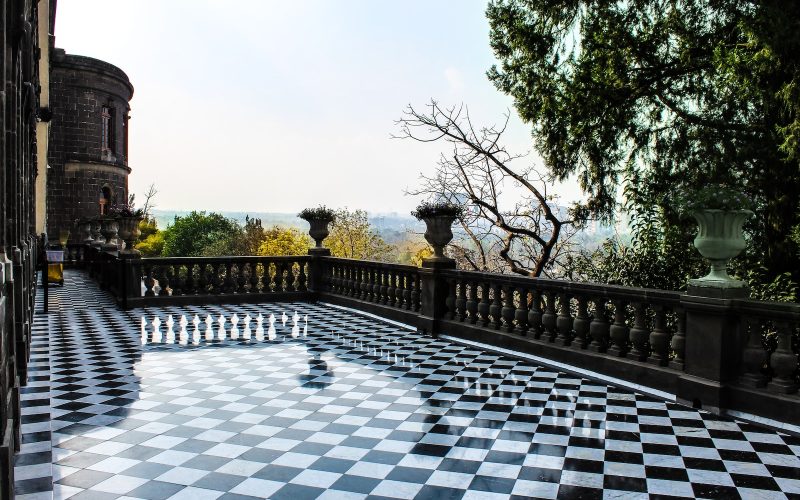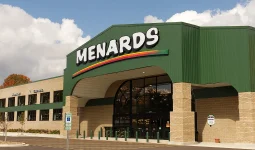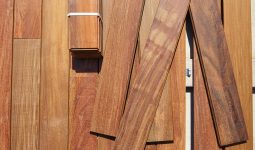Balcony floors come in different materials, each with advantages and disadvantages.
Also, there are some examples of beautiful balcony flooring ideas where these materials were used.
Hopefully, this information will help you to choose the best balcony floor for your home or any other project where it could be necessary to use balcony flooring ideas.
1. Outdoor Tiles
Using outdoor tiles is one of the best balcony flooring ideas. There are a few things to consider when choosing outdoor tile for your balcony.
- First, you need to decide what type of tile you want. There are many different types of outdoor tile, each with advantages and disadvantages.
- Second, you must decide what look you want for your balcony.
- Third, you need to consider the climate in your area and how the tile will hold up in extreme weather conditions.
- Fourth, you need to consider how much traffic your balcony will get and how easy it will be to clean the tile.
- Fifth, you need to consider the price of the tile.
- Sixth, you need to find a reputable company that sells outdoor tiles.
- Seventh, you need to install the tile properly so that it will last for many years.
Pros of Outdoor Tile: The biggest pro is durability. Outdoor tiles are usually made from concrete or granite, which can withstand harsher climates and more traffic than other materials.
One big pro is cost; natural stone tiles can be very affordable compared to other tiles.
Another pro is that they offer a more authentic feel than manufactured materials, which may not have the same aesthetic appeal as real stones.
One con could be weight; some natural stones may not stand up well against wear and tear on balconies due to their heavier weight.
Cons: The biggest con is the amount of upkeep required. These tiles, especially made from natural stone or concrete, must be sealed regularly to prevent water damage.
2. Natural Stone
Balcony flooring ideas made from natural stone are always beautiful, natural, and strong.
One big pro is cost; natural stone tiles can be very affordable compared to other tiles.
One con could be weight; some natural stones may not stand up well against wear and tear on balconies due to their heavier weight. A second con could be the lack of color options.
3. Manufactured Stone
These tiles come in many shapes, sizes, colors, and textures. They also come at various prices, making them appealing to people looking for an inexpensive option.
A con is that they may not always look as realistic as natural stone tiles might, depending on the style.
They come in both outdoor and indoor versions but should only be used outdoors under certain circumstances, such as slip resistance while allowing grass underneath without compromising drainage capabilities.
Dry climates where there is minimal foot traffic. One pro is they can provide safety.
4. Composite Decking
Composite decking gives you the best of both worlds: the look of natural wood without any maintenance requirements!
The material is designed to be durable and long-lasting, meaning it will never need refinishing or paint.
It’s also insect, rot, mold, and mildew-resistant, so you won’t have to worry about those problems ruining your outdoor space!
Another great benefit is that composite decking resists warping and shrinking, maintaining its shape for years after installation.
Plus, it’s been tested for safety by a third party for use on balconies!
No matter your house’s style, this material can complement your home beautifully with various colors and patterns from different manufacturers.
The pros of composite decking are that it won’t splinter or crack like wood and is resistant to pests and rot.
Composite decking doesn’t require sealing, staining, or painting, and it’s low-maintenance and easy to clean.
Also, it comes in a variety of colors and styles. It’s slip-resistant and fire-resistant.
Cons of composite decking: Although it does not require regular maintenance, it has some drawbacks.
One downside is that it does not support plant life and other materials, such as cedar; some plants may not survive over time.
However, suppose you’re looking for balcony flooring ideas with something more permanent and want to avoid having to replace parts of your balcony every few years due to weather damage. In that case, composite decking may be the right choice!
Many color options are available, so you can get exactly what you want without worrying about fading or chipping. All products are made using pigments instead of dyes.
5. Artificial Grass Deck Tiles
Artificial grass deck tiles are a great choice if you’re looking for balcony flooring ideas with a low-maintenance option for your balcony.
These tiles are easy to install and don’t require watering or mowing—perfect for busy people or those who travel often.
Plus, they add a touch of green to your space without the hassle of real plants.
Pros: They are low maintenance and do not risk damage from water. Cons: They have less color variety, long shipping times, a need for some assembly, can be slippery in wet weather, look like plastic, and some may have a rubber smell.
6. Outdoor Carpet Tiles
Outdoor carpet tiles make an excellent alternative to natural grass.
Their low-maintenance design makes them a great choice for condos, apartments, or other properties where watering plants is impractical. But you don’t sacrifice aesthetics for convenience.
Artificial grass is often used indoors for commercial spaces such as hotels and airports. It also looks as nice on your home’s exterior balconies or patio.
No matter where you choose to place it, there are lots of options available that will enhance any indoor or outdoor space.
7. Plastic Deck Tiles
Plastic deck tiles are one of the most popular balcony flooring ideas. They are easy to install, low maintenance, and come in various colors and styles.
Plastic deck tiles are also safe for children and pets, making them a great option for families.
Plastic deck tiles are a great choice if you’re looking for a durable and stylish option for your balcony!
Advantages of plastic deck tiles: The best thing about using them is that they require no maintenance.
Unlike other balcony flooring materials, these don’t need to be painted or sealed yearly.
However, if you want them to look their best, using an outdoor sealant once or twice a year is still recommended to ensure they last as long as possible without any chips or cracks from the sun.
Cons of plastic deck tiles: As with any material, there are some cons to using plastic deck tiles.
Since they’re so low maintenance, they can look dull if you don’t care for them.
It’s not too difficult to keep them looking their best, but they require some upkeep and maintenance to last longer.
Also, plastic deck tiles can be slippery when wet since they don’t absorb water.
This is why taking precautions like adding drainage holes or ensuring proper ventilation in your bathroom is important!
Finally, some worry about how solid these tiles feel when walking barefoot.
8. ProSource Water Resistant Carpet Tiles
Whether you have a large or small balcony, these ProSource Water Resistant Carpet Tiles are a great way to add extra style and comfort.
They’re easy to install and will help protect your floor from water damage. They’re stain-resistant and easy to clean to enjoy your balcony worry-free.
The pros of Pro Source water-resistant carpet tiles are that they’re affordable and don’t compromise quality. Installation is quick and easy, and you don’t need any tools at all!
These carpets will resist water, stains, dirt, and much more for years! They’re also antimicrobial, meaning fewer bacteria and fungi can thrive in damp environments.
The cons of Pro Source water-resistant carpet tiles: They take up space on the balcony, but they’re worth it if you need something durable enough for high-traffic areas or want it for a permanent installation.
If you’re looking for an affordable outdoor balcony flooring ideas option that adds color to your space while making cleanup easy, consider these ProSource waterproof outdoor carpet tiles.
9. Rubber Flooring
Rubber flooring is a versatile and durable balcony flooring option. It is available in various colors and can be cut to fit any size or shape balcony.
Rubber flooring is easy to clean and maintain and is slip-resistant. It can also be used with other flooring materials, such as tiles or decking, to create a unique look.
Rubber flooring is relatively inexpensive and can be installed by the homeowner without professional help. However, rubber flooring may not be the best choice for balconies that receive direct sunlight, as it can become quite hot to the touch.
Pros of rubber flooring: Rubber is one of the most durable materials available for balcony flooring. It is resistant to almost any environmental condition and can last a lifetime.
This type of flooring will also never show wear and tear due to age because it does not absorb moisture like some other types of material. Rubber will never warp or rot over time, making it ideal for outdoor environments.
In addition, homeowners do not need special skills to install this type of product themselves – all they need is time and determination!
Rubber flooring tends to be very affordable for those concerned about cost compared to many other flooring materials on the market today.
Cons of rubber flooring: Rubber is a soft, easily dented and scratched material. For example, dents may occur if heavy objects such as furniture are dropped on them.
Furthermore, rubber is not very sturdy and doesn’t provide much structural support, so it should not be used to create pathways on outdoor balconies.
Rubber is also a porous material that absorbs moisture quickly, meaning homeowners must clean their floors frequently to prevent mold growth.
10. Artificial Grass
If you’re looking for balcony flooring ideas with a low-maintenance option that will still look green and fresh, artificial grass is a great choice.
It’s also durable and can stand up to heavy foot traffic. Best of all, it’s easy to install and requires no special tools or skills.
Here’s what you’ll need to get started: scissors, scissors (we told you!), a box cutter or utility knife, sponges, a bucket with water, and a soapy solution.
The process is pretty straightforward: cut out your matting to the desired size; place the matting on top of the area where you want your new surface; use your fingers or a sponge dipped in soapy water to remove dirt from the concrete slab; use your box cutter/utility knife to trim the excess off the edge of your matting if necessary; let the matting dry overnight before using.
The pros of artificial grass are that it is less expensive than other options, comes in many colors, including fake grass greens and more neutral shades of browns, tans, grays, etc., and is better for pets because it doesn’t hold smells like real grass.
The cons are that synthetic fibers don’t absorb as much moisture as natural fibers, so they might not be ideal if you live somewhere with frequent rainy days.
They are less environmentally friendly than organic options like recycled tires or coconut coir.
Still, this type of grass has grown in popularity over the last few years due to its practicality and lack of upkeep. Depending on your climate, it may be the best solution for keeping slippery surfaces safe when wet!
11. Rubber Pavers
Rubber pavers are a great choice if you’re looking for balcony flooring ideas that are easy to install and maintain.
Made from recycled tires, rubber pavers are durable, slip-resistant, and come in various colors and styles.
Best of all, they’re affordable and can be installed by the average do-it-yourselfer.
Cons of rubber pavers: One major downside is that rubber pavers aren’t as long-lasting as other patio materials, such as brick or stone.
They’re less hardy, so wear and tear will cause them to break down more quickly than brick or stone.
This makes them ideal for patios with low foot traffic but not well-suited for high-traffic areas.
If you install rubber pavers on your balcony, it’s important to check their condition regularly and replace them when they crack or chip excessively due to wear and tear.
The pros of rubber pavers: Many people opt for them because they’re a low-maintenance option.
They’re easy to clean and sweep, and you can pressure wash them if they become dirty.
Rubber pavers also resist stains, so they stand up well against smudges and spills but don’t need constant cleaning.
12. Court Flooring
One great option for balcony flooring is court flooring. This type of flooring is durable and easy to clean, making it a great choice for high-traffic areas.
Plus, it comes in various colors and styles to suit any space. Here are a few things to keep in mind when choosing court flooring for your balcony:
- The color will be different from the inside due to sunlight exposure.
- It is not recommended for kitchens or bathrooms because it can become slippery when wet.
- Remember that the tiles will be installed with grout lines, so plan accordingly if you have gaps between the floorboards!
The pros of court flooring are that it is easy to clean. You only have to worry about cleaning court tiles if you spill something. Otherwise, a quick sweep and mop with a mild cleaner should be enough.
If anything spills on the floor, wipe it immediately to avoid stains. Court floors are made of porcelain tile, which makes them stain-resistant and durable.
It’s also durable. These floors tend to last up to 10 years before they need replacement. It comes in a variety of color options.
If you’re like me and love changing your decor seasonally, this may be the perfect option! You can always swap out one set of tiles while keeping another set there.
The cons of court flooring are that it is expensive. While court tiles can be a great investment for your home or business, they are pricier than other options.
Depending on the size of your balcony, you could spend anywhere from $1-$4 per square foot. Some installers also typically charge $50-$100 per hour.
Also, difficult to install. Hiring someone can be costly if you don’t feel confident doing the installation. Tiles require grouting, which requires more time and labor (and money).
Finding an installer who carries court tiles in stock might also be difficult depending on where you live.








